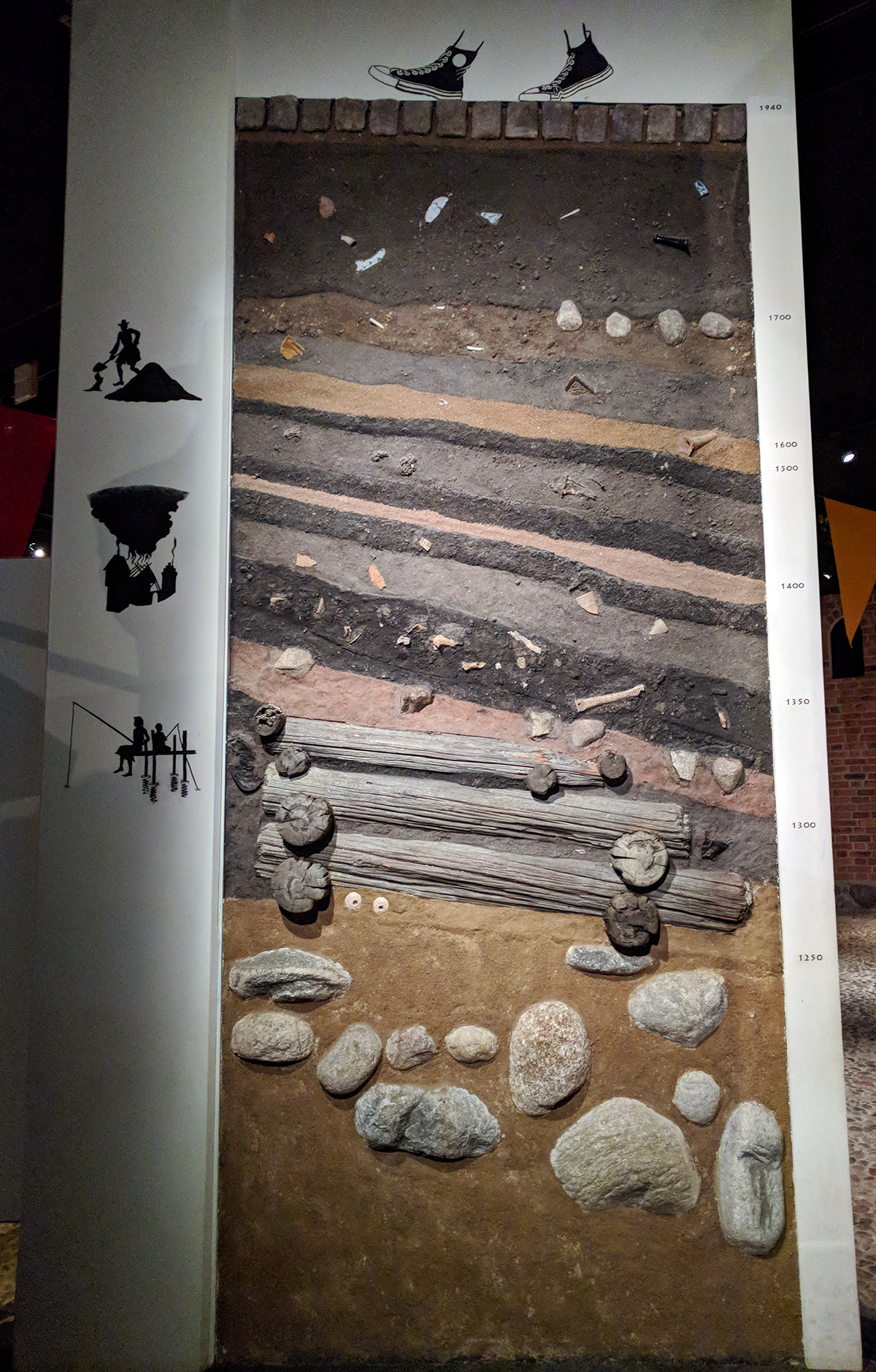Today is a great World Cup day. The two teams for which I am rooting are playing—thankfully not yet against each other. Later this afternoon England takes on Colombia. But this morning Sweden will play Switzerland. (Neutrality is no longer an option.) And in the spirit of Sweden, I figured I would return to my winter trip to Stockholm and dig out a graphic. This one seemed particularly relevant.

It may be difficult to read, because it is in Swedish along with being large, but it shows medieval trade routes connecting Sweden to Europe. For example, Stockholm received cloth from East Anglia in modern-day England and from Bruges in Flanders, beer from modern-day Germany, and wine from modern day France and Spain.
Even in the Medieval period, international trade was vital to the economies of the emerging European cities and states.
Credit for the piece goes to the Medieval Museum design department.

